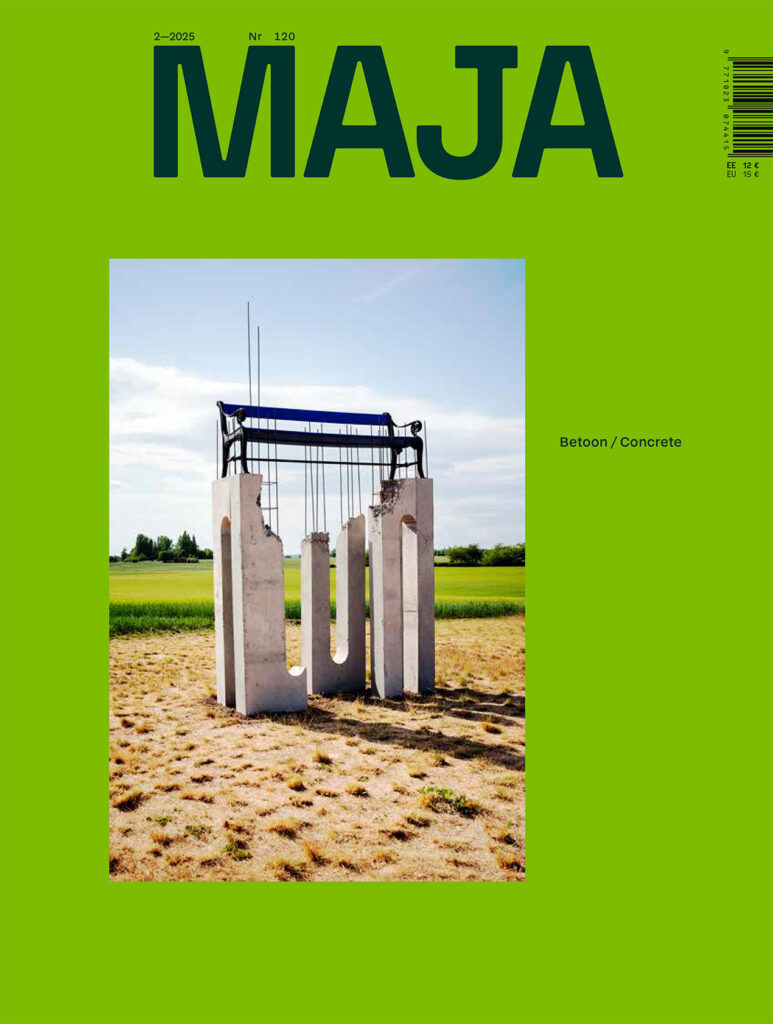CONTEXT
Built Heritage and Modern Times 〉Kaia-Luisa Kurik
A Small Building’s Great Impact in a Small Town 〉Liina Jänes
Radical Contextualism 〉Eik Hermann
Rethinking Preservation 〉Kaija-Luisa Kurik
SPATIAL DIVERSITY
The Patterns of Shrinking 〉Kristi Grišakov, Damiano Cerrone
Tropics in the City 〉Helin Kuldkepp
The Enabling Heritage Space 〉B210 Architects
Controversial Modernist Heritage 〉Carl-Dag Lige
The Unmarked Virtues of Interior Architecture 〉Semele Kari
Things Left Unnamed 〉Paco Ulman + Midjourney AI
GREEN TURN
Spatial Heritage and Green Transition 〉Helen Sooväli Sepping
From Lender to sLender 〉 Sille Pihlak
SOCIAL CONNECTIONS
Aesthetics, Buildings & Conservation 〉Ewa Effiom
Heritage and the Culture of Volunteering in Norway 〉Espen Openhaug
Norwegian Strategic Heritage Practices 〉Vignir Freyr Helgason
OLD TOWNS
What is Heritage-Based Development? 〉Kaija-Luisa Kurik
A Linear Square or a Street? 〉Karisma Architects
The Living Souls of Vallikraavi 〉Grete Tiigiste
A Building That We Need 〉Ulla Alla, Mari Möldre, Merilin Kaup, Margus Tammik
New Life for the Old Town 〉Johan Tali
Built Heritage and Modern Times
An environment that preserves architecture and other elements from several eras is cosier for humans than an environment built within a single time period. There are many explanations for this—for example, the attention restoration theory in environmental psychology, according to which plentiful space packed with joys of discovery creates mental comfort. A text that contains contradictions does not work, whereas in space, buildings and objects that originate from different eras and express different ideologies can stand side by side. There can be contradictions and conflicts simmering between different historical layers. Juxtaposing and highlighting the latter gives voice to societies of different eras. This kind of conflict is stimulating, sobering and creates the preconditions for being precise. It reminds us that no ideology is self-sufficient, and incites skepticism toward all-encompassing solutions. Contradictory space keeps us sensible. Italian humanist Anton Francesco Doni has written while in his Venetian rental apartment about how the everyday sounds, artworks and buildings in the space around him make his mind wander; how in passing from everyday items to historical objects, an integral experience is born: ‘I am in every country [at once] and see all mankind if I stand at the window’.
In Estonia, there are numerous places where the number of buildings exceeds the number of inhabitants many times over. Nearly non-existent electricity consumption shows that in approximately a third of Estonian municipalities, every sixth dwelling is empty. The “excess” of space is especially glaring in rural areas and old towns, where even notable buildings such as cultural monuments are still only waiting for a new use and modern rediscovery of their meaning. Spatial designers have a saying that the best way to preserve a building is to adapt it to modern use: ‘If we change too much, we will ruin the essence; if we change too little, the new space won’t work. /…/ Only everyday use can make old architecture vital again and give value to heritage,’ said Portuguese architect Eduardo Souto de Moura, the winner of Golden Lion at 2018 Venice Architecture Biennale, when commenting on his diligent and longstanding work on renovating an old convent and turning it into a guesthouse. Proceeding from this, we can ask—how to see opportunities for dealing with contemporary challenges in all the spatial plenitude that we have inherited? The most pressing issues that spatial heritage might help with are green transition and the agility, sociality of society. The need to learn healthier and more precise ways of building will soon have to be addressed in any case. However, built environment often contains examples of tried-and-true practices, whose ideas could be reused in modern ways, such as the design system of Lender houses in Tallinn; perhaps we could even pick up on the unrealised dreams of once-planned spaces. In this way, heritage enables us to take part in an experience of quality that we can then recreate in tune with our own times.
Heritage-led development is one way of interpreting old architecture that does not view spatial “excess” as ballast, but rather as an opportunity for local development. The origin story of Paide state gymnasium that was opened in 2021 comprises the multifaceted nature of working with spatial heritage, and illustrates how the interplay of detailed as well as city-scale decisions can lead to an excellent outcome. An erstwhile school building in the very centre of Paide that had stood empty for the last couple of decades has now received a modern extension, and has begun to integrate the local community and shape the face of the town. The construction was preceded by heated discussions about the location of the building, held between many organisations, who were ready to make concessions in their standard practices in order to achieve an outstanding result. The story of the school’s rebirth in Paide shows that the treasury of spatial heritage is still only waiting to be unlocked and interpreted in as high-flying ways as possible!
Kaja Pae
This issue was put together in collaboration with the Estonian National Heritage Board project ‘Historic Town Centres Revitalised Through Heritage-Led Local Development’.
Editor-in-chief Kaja Pae
Guest Editor Kaija-Luisa Kurik
Editor Urmo Mets
October, 2022





